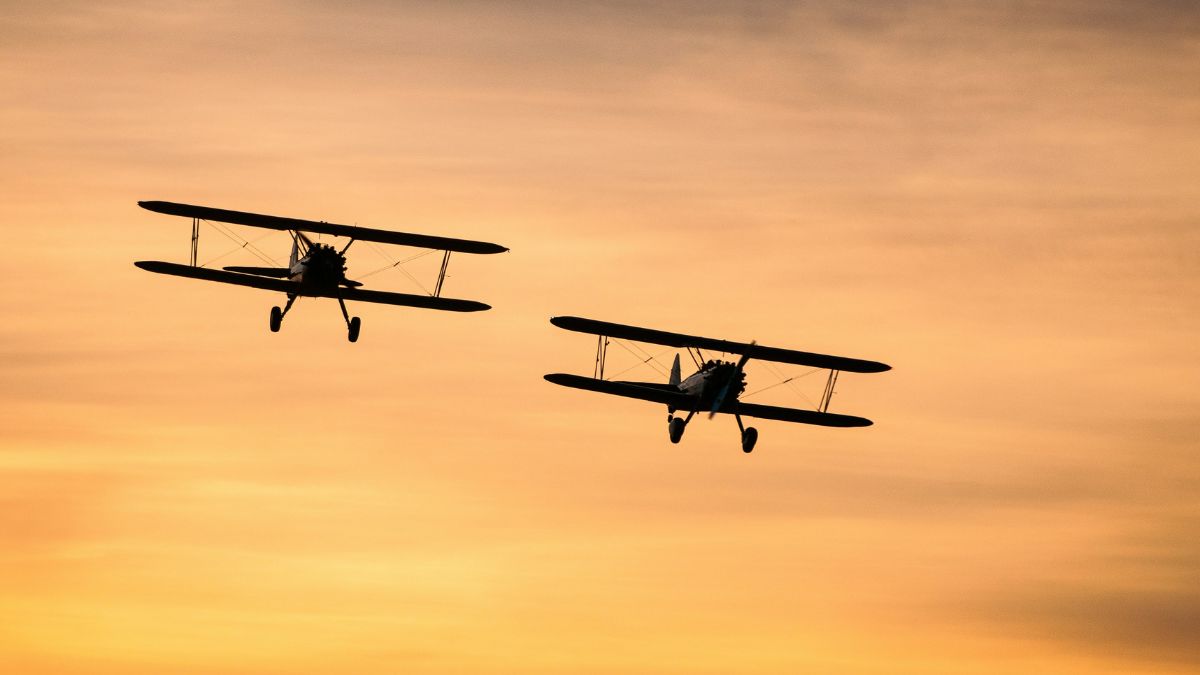Aviation is a field where progress is measured by technological achievements, relentless innovation, and iconic designs. Among the most influential players in this space stands Vought, a name synonymous with cutting-edge aircraft development. A specific example that continues to resonate in aviation history is 18001Vought, a pivotal aircraft that encapsulates the legacy of the Vought Corporation and its profound influence on aerospace engineering.
The development of 18001Vought not only showcases the innovation capabilities of the company but also marks an important era in both military and civilian aviation. This aircraft emerged as an emblem of resilience, adaptation, and the spirit of innovation that drove aviation pioneers to continuously push the boundaries of what was possible.
18001Vought: A Groundbreaking Concept
18001Vought is more than just a code or a designation; it symbolizes a monumental step forward in aviation technology. As with many historical aircraft designs from Vought, the project was the result of comprehensive research and development, aimed at achieving superior performance, reliability, and adaptability. Vought was renowned for producing aircraft that could function under extreme conditions, and 18001Vought exemplified this expertise.
The project, which embodied the principles of advanced aerodynamics and structural integrity, set new standards for aircraft design. The fuselage design, engine selection, and material engineering all contributed to its remarkable operational capabilities, both in combat scenarios and civil applications.
Vought’s Legacy in Military Aviation
Vought is often best known for its military contributions, and 18001Vought played a significant role in this legacy. The design leveraged innovations in speed, durability, and weapon integration, enabling it to fulfill demanding military roles. This aircraft was part of a larger lineage that included iconic names like the Vought F4U Corsair, which gained prominence during World War II. While 18001Vought did not gain the same level of fame, it still contributed to the company’s reputation for building versatile and rugged military aircraft.
The Vought company was deeply involved in various military programs, particularly with the U.S. Navy. Throughout its history, Vought worked to meet the demanding requirements of naval aviation, producing carrier-capable aircraft that were critical to military operations. 18001Vought is reflective of this dedication to producing robust and high-performance planes capable of enduring the stresses of naval warfare.
Engineering Marvels of 18001Vought
One of the most intriguing aspects of 18001Vought is the innovative engineering that defined its construction. Vought engineers were pioneers in applying cutting-edge materials and aerodynamic principles to enhance aircraft efficiency and performance. The design incorporated advanced aerodynamics, which improved both lift and speed while maintaining fuel efficiency — a crucial factor for both military missions and civilian transport.
The engineering challenges that were overcome during the development of 18001Vought provided key insights into structural integrity, aerodynamics, and propulsion systems. The aircraft was not only capable of performing demanding maneuvers but also exhibited remarkable endurance. These features made it a versatile platform, which could be adapted for various roles, whether for reconnaissance, combat, or transport.
Innovative Use of Materials
During the era in which 18001Vought was developed, there was a significant push towards the use of lightweight yet strong materials in aircraft construction. Vought embraced materials like aluminum alloys and high-strength composites, which allowed the aircraft to maintain structural rigidity while reducing overall weight. This was particularly important for military aircraft, where weight reduction directly influenced speed, range, and maneuverability.
The focus on materials engineering helped 18001Vought stand out, as it achieved the perfect balance between strength and flexibility, ensuring that the aircraft could withstand the rigors of high-speed flight and combat situations.
Vought’s Contribution to Aerospace Technology
Beyond the specific case of 18001Vought, the Vought Corporation was instrumental in pushing the limits of aerospace technology. The company’s approach to innovation was multi-faceted, involving a blend of research, practical application, and extensive testing. Vought’s engineers were constantly exploring new technologies, from propulsion systems to avionics, and 18001Vought benefited from these advancements.
Advanced Propulsion and Power Systems
One of the key factors that set Vought aircraft apart was the use of advanced propulsion systems. 18001Vought utilized engines that provided high thrust while maintaining fuel efficiency, a critical factor for both military operations and long-range civilian flights. The integration of cutting-edge engines also meant that the aircraft could achieve high speeds and sustain them over long distances, making it a formidable asset in aerial combat or high-demand civilian applications.
Vought’s ability to innovate in engine design directly contributed to the success of 18001Vought, making it a prime example of how technology can transform aircraft performance.
Military and Civilian Applications
While 18001Vought was primarily developed with military operations in mind, its adaptability made it suitable for civilian purposes as well. This dual-use capability is one of the standout features of many Vought aircraft. The platform could be modified for cargo transport, passenger travel, or even emergency medical evacuations, demonstrating the versatility and forward-thinking design that went into its development.
Civilian Impact and Commercial Aviation
Although Vought is often associated with military aviation, its contributions to the civilian aerospace industry should not be overlooked. 18001Vought played a role in helping to bridge the gap between military and civilian aviation. The company’s innovations, particularly in aerodynamics and propulsion, were applicable to commercial aircraft as well. This cross-pollination of technology meant that advancements developed for military use eventually found their way into commercial aviation, benefiting civilian passengers and operators.
The Legacy of 18001Vought in Modern Aviation
Even though 18001Vought may not be as widely known as some of its contemporaries, its impact on aviation history is undeniable. The principles and technologies developed during its production laid the groundwork for many future innovations in both military and civilian aviation. Today, modern aircraft still benefit from the advancements in materials, propulsion, and aerodynamics that were pioneered by Vought.
The aircraft represents a unique chapter in the broader story of aviation, illustrating how companies like Vought pushed the boundaries of what was possible and contributed to the evolution of flight. The legacy of 18001Vought endures not only in the historical record but also in the continued development of advanced aerospace technologies.
FAQs
What was 18001Vought primarily used for?
18001Vought was primarily designed for military applications, particularly naval aviation. However, it also had potential uses in civilian transport and cargo roles due to its versatile design.
What innovations did 18001Vought bring to aviation?
The aircraft introduced significant advancements in aerodynamics, materials engineering, and propulsion systems. It utilized lightweight materials like aluminum alloys and featured engines that provided high thrust with fuel efficiency, enhancing both speed and range.
How did Vought contribute to the development of military aviation?
Vought was a key player in developing naval aircraft, producing rugged, versatile planes like the F4U Corsair. The company’s focus on creating carrier-capable aircraft greatly influenced naval aviation tactics and operations.
Was 18001Vought ever used in commercial aviation?
While primarily a military project, the engineering principles and technologies behind 18001Vought influenced commercial aviation. Its innovations in aerodynamics and fuel efficiency were applicable to both military and civilian aircraft.
Why is Vought important in the history of aviation?
Vought is significant due to its contributions to both military and civilian aviation. The company was known for producing durable, high-performance aircraft that played critical roles in various military conflicts, particularly for the U.S. Navy.
What materials were used in the construction of 18001Vought?
18001Vought was constructed using advanced materials like aluminum alloys and high-strength composites. These materials provided the necessary strength while keeping the aircraft lightweight, improving its overall performance.
Conclusion
The story of 18001Vought is a testament to Vought’s enduring legacy in the world of aerospace engineering. This aircraft, like many others produced by the company, embodies the spirit of innovation and the relentless pursuit of excellence that has defined the aviation industry for decades. From military operations to potential civilian applications, 18001Vought represents a critical chapter in aviation history, one that continues to inspire modern aerospace advancements.









